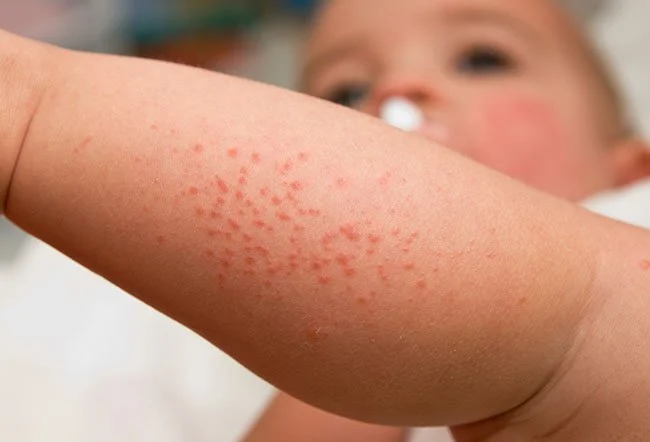It is commonly known that people get allergies from peanuts, pollen, pets, and more, but there’s one that’s a little less common and that’s the sun allergy. It is also known as sun poisoning and it’s a reaction from the immune system to sunlight often resulting in a red, itchy rash. Very few people have a natural reaction from it, most of the time it’s triggered by a different factor, like various types of medication or exposure to certain substances. The majority of these allergies resolve on their own over a relatively short period of time and you can even hurry the process up by using skin balms or lotions. In order to prevent sun poisoning, it’s best to use protective clothing and sunscreen all while avoiding peak sunlight hours.
Would you like to know more? Read below the article by Dr. Emmanuel Laffitte.
SUN ALLERGY: WHAT IS IT ABOUT?
The exogenous causes correspond to photosensitivity caused by a substance that, when in contact with ultraviolet rays, becomes toxic to the skin or creates an allergic skin reaction. It can be a substance applied to the skin, for example, the juice of certain fruits or vegetables (lemon green, mango, celery, artichoke), certain cosmetics (perfumes, balm from Peru), or anti-inflammatory creams. It can also be substances taken internally, which, arriving through the blood to the skin, undergo chemical transformation mediated by ultraviolet rays. The reactive products then become toxic or allergenic to the skin, and the reaction takes place on areas of skin exposed to the sun. The main agents are known as “photosensitizers” correspond to different classes of drugs: certain antibiotics, non-steroidal anti-inflammatory drugs, diuretics, certain sedatives, and antiepileptics.
Endogenous causes correspond to reactions photosensitivity without finding a cause exogenous, or to skin diseases that are worse from exposure to the sun. We can distinguish what is called lucites, which correspond to a kind of triggered eczema by sun exposure, solar urticaria which corresponds to an urticarial reaction appearing after sun exposure. There are many other causes, for example, certain diseases genetics, certain autoimmune diseases, or certain liver diseases which can cause photosensitivity.
WHAT ARE THE SIGNS OF SUN ALLERGY?
It can be an itchy reaction resembling eczema, sometimes like hives, or in severe cases an intense reaction resembling a sunburn with erythema (redness) and sometimes bubble formation (blistering). The affected areas are those exposed to sunlight, namely the face (without damage to the skin under the chin in general), and depending on the clothing the neckline, back of hands and arms, sometimes legs. In the case of lucitis, the most frequent benign forms correspond to redness with itching appearing during the first sun exposure and gradually disappearing with tanning.
WHAT TESTS TO DO IN CASE OF SUN ALLERGY?
In the event of an abnormal reaction to the sun, consult your doctor or a dermatologist to verify the absence of an exogenous cause, whether it is a substance applied to the skin or medicine taken internally, and possibly look for an internal origin.
HOW TO TREAT SUN ALLERGY
The treatment is primarily preventive: do not apply a risky substance to the skin before exposure to the sun (in particular no perfumes, cosmetics, anti-inflammatory cream), and avoid sun exposure when taking photosensitizing medication (check with your doctor). In lucitis, very gradual exposure to the sun with the use of sunscreens can sometimes prevent its onset. In some cases, desensitization to the sun can sometimes be attempted under dermatological control.
Author:
Dr. Emmanuel Laffitte
Department of Dermatology, HUG, Geneva




